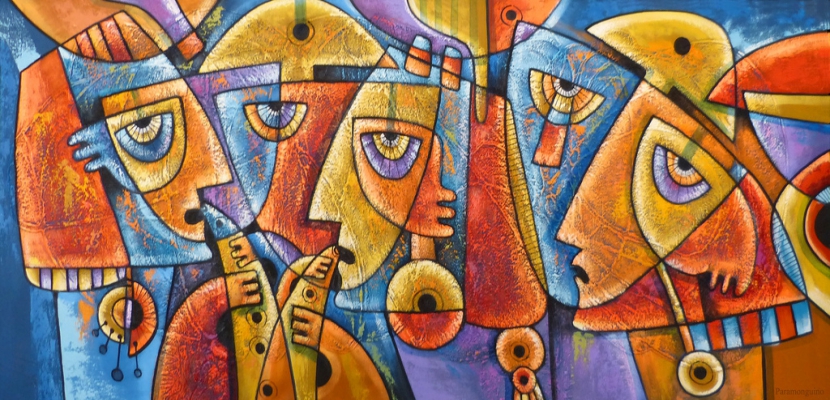
The style called Cuzco Due to a rather idealized vision of the scenes represented, the elongated faces and the hieratic postures of the characters emerge from very little descriptive planes, and all the attention is focused on the colorful details, with small motifs, enhancing the gold leaf. His two main works are the Virgen de la Candelaria and the Coronation of the Virgin, both preserved in the church of San Pedro de Lima. On Bitti's death in 1610, his work was continued by his student Diego de la Puente, in Trujillo, Cuzco and Lima, where he held the famous San Francisco Convent Dinner.
The true founder of the Cuzco school is Diego Quispe Tito. A mestizo painter who enriched Bitti's mannerism from 1630 onwards with a particular care given to the landscape, with his meticulous decorations that mix abundant, stylized flora and fauna with elements inspired by Flemish engravings.
He is the author of a huge series of works, such as the 12 moments in the life of Saint John the Baptist, in the church of San Sebastián in Cuzco, and the 9 signs of the zodiac of the Cuzco Cathedral. Basilio Santacruz is characterized at the same time by its virgin mountains of the Cathedral of Cuzco. He also painted in 1667 several lives of San Francisco, for the convent that bears the same name in the city of Cuzco, as for that of Santiago de Chile in 24 frames.
Diego de la Puente introduced the figure of the archangel carrying a arquebus, and which was later taken up en masse at the school in Cuzco. According to a syncretistic interpretation, the figure of illapa, Inca god of lightning, as well as halos evoking the rays of the sun god Inti. Another masterpiece of the Cathedral of Cuzco, the famous Andean Dinner was painted in 1750 by Mark Shoe, prolific author of frescoes in the cloister of the Iglesia de la Merced in Cuzco.